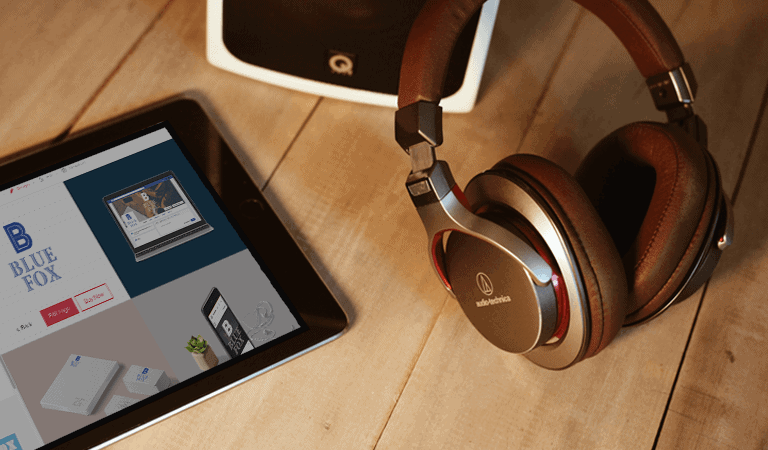Brands are like people.
We like them when they’re approachable; we stay away from them when they don’t seem genuine. They can crack us up, and just as easily make us cry. Some brands seem like they were created especially for us, and in rare cases, they even make us feel validated and loved.
In other words, brands can make an emotional impact, and the successful ones usually convey a positive experience to their customers.
But how do they deliver this positive experience? How do they even define what it is?
The answer: Through their brand personality.
Brand personality is one of the central parts of a brand identity, and it’s one of many tools at your disposal to shape the public’s perception of your business.
What is Brand Personality?
Your brand personality is the human component of your brand. It is made up of emotional traits and behaviors that are consistent over time.
Where your brand identity is the overall message of your brand, your brand personality is the emotional ways through which that message is transmitted.
Bringing your brand personality to life is one of the most important aspects of branding, because it allows your customers to remember who you are and form positive relationships with your brand.
Think about it: The most memorable people are usually those whose personalities stand out, and brands are no exception to this rule.
However, a brand with multiple personalities is like having a friend who acts friendly and kind one day but cynical and rude the next. (And if you’ve seen the movie Split, you already know not to touch that with a ten-foot pole.) You’re never sure what reaction you’re going to get, and as a result, you’re probably not going to be so quick to call them up.
Similarly, your audience wants to know what behavior to expect from your brand. If they can’t rely on you to be funny or have integrity or whatever it is that differentiates your brand from others, they’re not going to rely on you at all. Because of this, it’s important to understand exactly what makes up the personality of your brand – and then keep it consistent!
This brings us to the next question: What does a brand personality look like?
Types of Brand Personalities
Most brand personalities can fit into five broad categories, or “dimensions,” as they’ve been coined by social psychologist Jennifer Aaker (and have since become the industry standard). Each dimension has its own personality traits and strengths:
Competence
Reliable, successful, intelligent. Customers are attracted to brands like this because they believe they will get the job done. Think brands like Microsoft or Volkswagen.
Ruggedness
Thick-skinned, outdoorsy, tough. These brands make customers feel powerful, and remind them of nature. Think brands like Woodland and Harley Davidson.
Sophistication
Charming, refined, high-class. It usually takes time to exude sophistication as a brand, but once they get there, these brands are poised, polished, and make their customers feel classy and elegant. Think brands like Tiffany or Armani.
Excitement
Daring, intriguing, imaginative, up-to-date. Maybe they push limits, but in a playful way. These brands are good at creating a lot of hype and building excitement in their audience, like Mountain Dew or Virgin Atlantic.
Sincerity
Wholesome, genuine, honest, warm. Customers love brands like this because they are believable and trustworthy. These brands keep to their promises and meet expectations. Think brands like Cadbury or Hallmark.

Creating Your Brand Personality
When trying to figure out where your brand fits into all of this, you basically have to ask yourself: Who would my customers love to hang out with?
From here on out, you should be imagining your brand as a human being. How does it look? What should it sound like when it speaks? These characteristics fuel the emotional and associative qualities of your brand that your customers will connect with.
And, answering these questions will also help inform the type of branding you choose to do later on.
There may be some human characteristics already inherent to your brand, whether they come out through the silly holiday memes you post all over Facebook, or the serious-but-informative newsletter you send out to followers once a month.
However, your brand’s pre-existing traits should contribute to the same emotional message rather than contradict one another. And remember, brand personalities are only effective if they resonate with your target audience.
You should already know who your target audience is, what their pain points are, and how they communicate. With all of this in mind, it’s time to create the personality your audience will fall in love with!

Step 1: Consider the competition.
As important as it is for your brand personality to reflect your brand message, you also want to stand out next to competitors. If all of your competition exudes sophistication, for example, maybe you’ll want to take a different path and focus on sincerity. This is a good way to uniquely position yourself in the market and differentiate your brand from others.
Step 2: Get adjectives on paper.
Describe your brand in one word – then do it again. And again. And again. Fill up a page with adjectives that paint a picture of your brand, and pick the three descriptions that fit the best with who your brand is.
Step 3: Draw the character.
What kind of person embodies the above adjectives? Draw them.
Whether you’re the next Picasso or have never held a pencil in your life, this exercise is worth a try. Even if you end up with a bunch of thought bubbles scribbled on the page and not much else, you’ll still get an idea of what your brand should “look” like. And later, you’ll find a similar visual feel seeping in to your logo, color combinations, and brand typography choices.
Step 4: Have a conversation with your brand.
Yes, you read that correctly. Now that you’ve discovered which traits define your brand, the best way to determine your brand voice is to speak with it! Ask your brand a question; how would it answer you? Is it:
- Witty?
- Reassuring?
- Informative?
- Serious?
- Simplistic?
- Futuristic?
- Relatable?
The list of possibilities is long but worth exploring. Once you figure out what your brand voice is, you’ll be using the linguistic style in everything you do, from the content you create to the way you answer your customers’ FAQs. Your brand voice is one of the key ways you’ll be transmitting your entire brand message to your audience, so take the time to get it right!
Step 5: Be consistent.
As soon as you’ve understood what your unique brand personality is, commit to it.
The way your brand behaves from here on out should be in line with the traits that define it – if you’re funny and down-to-earth, spread humor across your campaigns; if you’re polished and elite, don’t make practical jokes your thing.
Of course, if something isn’t resonating with your audience, then don’t worry about tweaking your personality to be more in line with what they want. (And, if worse comes to worst, you can always rebrand down the line!)
Over to You
Once you can identify your brand personality to a T, you’re that much closer to bringing your brand identity together. These traits that you want your brand to emit will help inform which types of fonts and color combinations you will later use in your brand designs. When you feel ready to take the next step, read on to learn about how to create the brand strategy that will help to put your brand on the map!
